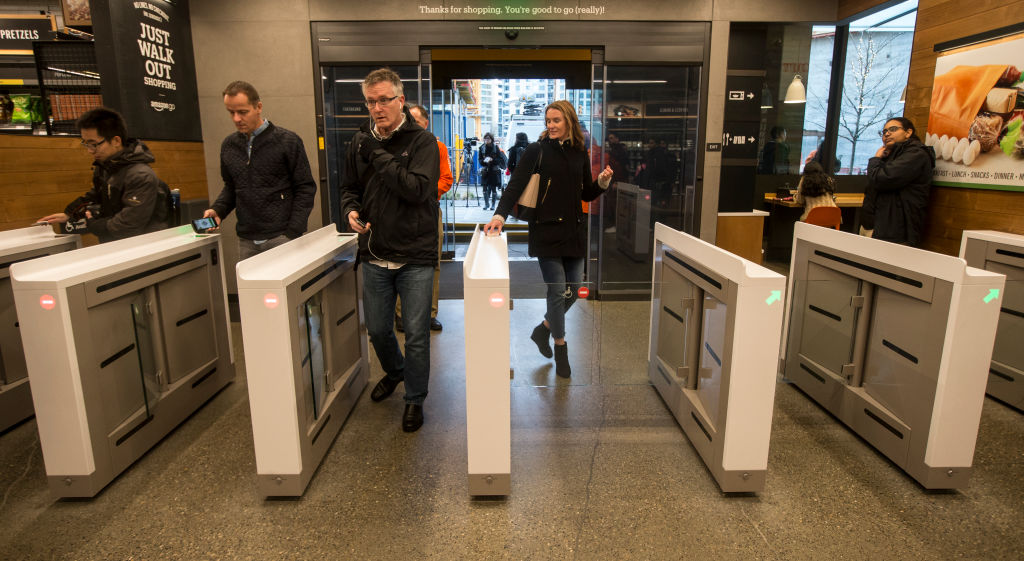The Covid 19 pandemic has thrown the standard retail strategies and practices out of gear. With the health advisory and social distancing norms still continuing to be in place, “contactless retail” has become the new blue eyed boy in town.
Forecasts predict that the concerns due to Covid 19 are here to stay, at least in the near foreseeable future. The trick is to find ways to work-around that will still keep a store in business, while also helping shoppers feel safe and not too scared to enter a store.
This is where a contactless retail strategy comes in. This is essentially trying to reduce or completely take away the usual physical contact touchpoints around the store. With contactless retail, stores can mitigate the risk factors while maintaining the health directives and safety protocols.
Here are the elements of a contactless retail strategy that will ensure success and help retailers function in this new normal.
Store layouts will have a huge role to play in contactless retail
It is pretty evident that retail stores cannot be bustling with people and overcrowding is definitely an issue. In the wake of the pandemic, store layouts will need to drastically change. Having enough space to maintain social distancing while also being able to make their purchases will be key to consumers.
Say a particular product usually garners more attention, maybe have that product in multiple locations in the store. This will prevent single-spot crowding. Areas in the store which see high traffic should be regularly sanitized to ensure added safety.
Setting up sanitizing stations, doing temperature checks at the store entrance, providing gloves to all shoppers will greatly reduce risk. Displaying navigational instructions and putting up maps across the store will immensely help, reducing the need to ask for information.
Shoppers will need to feel safe and less afraid from entering a store and doing their shopping. Doing these will definitely help foster that feeling more.
Re-configuring the in-store design and layout for space and speed will be key.
Ecommerce is a must have for a contactless retail experience
How can we talk about contactless retail strategy and not talk about ecommerce. It is probably the biggest tool in the box to execute such a strategy.
Retailers will need to include ecommerce as a channel in their sales strategy. There will be enough people who will still prefer to shop online even if stores are fully open to the public. For retail owners who have only operated in physical spaces so far, it will also be a new sales channel. Transforming into an omnichannel retail business will be a matter of survival for retailers.
Yes, there is an upfront setup and management cost to it. But by now we can guarantee that ecommerce is here to stay, and is probably the big future for retail. The pandemic has only accelerated what was already on its way.
And for a successful omnichannel retail strategy, you cannot do without a solid inventory management software. Retailers will need one to seamlessly integrate inventory and sales across multiple online and physical channels of sale.
Curbside pickups and BOPIS will greatly alleviate fears of shoppers
A great way to execute a contactless retail strategy would be to have people not even be present in the store. The way to do that would be with the use of curbside pickup services and the option to buy online and pick up in-store (BOPIS).
Retailers can still have people buy from them without having to deal with people flocking and crowding up the space. With curbside pickup consumers just need to drive to the store and pick up their goods in the open space of a curb or parking lot. With BOPIS, they will spend only a few minutes picking up their order.
Either way, consumers spend the least time and also get to buy all the things they need with relative peace of mind. They will also appreciate stores that offer this for thinking about their safety.
Mobile and digital payments are the future of contactless retail
Mobile phones are ubiquitous. Almost every demographic has access to a smartphone now. Having a strategy to implement mobile and digital payments will greatly reduce the need for any physical contact when making payments.
Sorry cash payments, it was good while it lasted. It’s not you, it’s the pandemic.
Big box retailers are coming up with their own mobile wallets and payment services. But even smaller stores can make use of options such as Apple Pay, Samsung Pay, and Google Pay.
These will enable consumers to use their phones to make payments and be secure both physically and digitally.
Having a point of sale software that helps the retail execute a mobile payment strategy will be crucial. Such software also helps in tracking the sales and inventory, easy billing and invoicing, and the use of barcodes. This becomes even more essential for an omnichannel retail business trying to go contactless.
Even things like loyalty cards and rewards programs can be integrated into a mobile contactless retail solution. Having these digitized takes away the need for using physical cards and coupons to make payments.
Scan-and-go and self-checkouts options will greatly reduce burden on staff
This also forms as an extension to the mobile payments strategy of becoming a contactless retail operation.
Scan-and-go allows consumers to scan the QR code of the product using their smartphone and bag the item themselves.
Every item they scan is added into their cart and once they have all that they need, they need to simply make the payment online.
Self-checkout kiosks to help in a similar manner as shoppers can themselves scan the items they wish to purchase. Having a contactless terminal immensely helps here as these devices provide the tap-and-pay functions.
Customers can simply wave their card and the payment is done without having to touch the device or handover their card to a cashier to swipe.
Another great initiative is Amazon’s palm recognition technology which they’ve previewed at a couple of their stores in Seattle. Consumers can simply flash their palms to gain entry and make purchases in the stores. It is completely contactless and is a great way to address the issue for retailers.
Retraining staff for contactless will ensure all-around safety
All the above is not to say that staff have to be reduced or taken out of the retail shopping experience. In fact, they might have a bigger role to play in executing a successful contactless retail strategy.
With new in-store practices and protocols coming into place, a lot of shoppers will need help in adjusting to this new experience. This is where a well-trained staff who have been primed with all the necessary information will be of great help.
The convention of employees or sales representatives hovering around customers will need to be done away with. Instead they could be present at designated spots within the store where they can keep their distance while still providing assistance when asked or needed.
They could guide shoppers in use of the more technology oriented solutions they are offering and educate them on the benefits of these. They will provide the much needed human touch to all the automated solutioning.
A retail staff is the face of the company and they are the people shoppers go to when they need help in the store.
This helps the employees feel safe and comfortable in doing their jobs, as they can still interact with customers, albeit from a distance.
What all of this means…
The strategies discussed might not be equally applicable to every retailer. What works and what doesn’t would come down to the type of store and even a specific store itself. However, taking these different elements to mix and match according to specific needs will be the key.
This is the time for retailers to set up the foundation for a contactless retail strategy that will elevate them to the next stage in modern retail.
Request Demo
thank you
thank you
thank you
Request Demo
window.IS_INDIA = 0;window.USER_COUNTRY = 'China';window.USER_CITY = 'Hangzhou';window.USER_COUNTRY_ISO = 'CN';
Sharan is an avid writer with experience writing on different technologies for startups in various domains. He’s a self-professed tech nerd and start-up buff who likes keeping abreast with all the latest news in these areas.
(function(d){var s=d.createElement('script');s.type='text/javascript';s.src='https://a.omappapi.com/app/js/api.min.js';s.async=true;s.dataset.campaign='cxecxy09nlvnnyvfiqjf';s.dataset.user='22867';d.getElementsByTagName('head')[0].appendChild(s);})(document);
,



